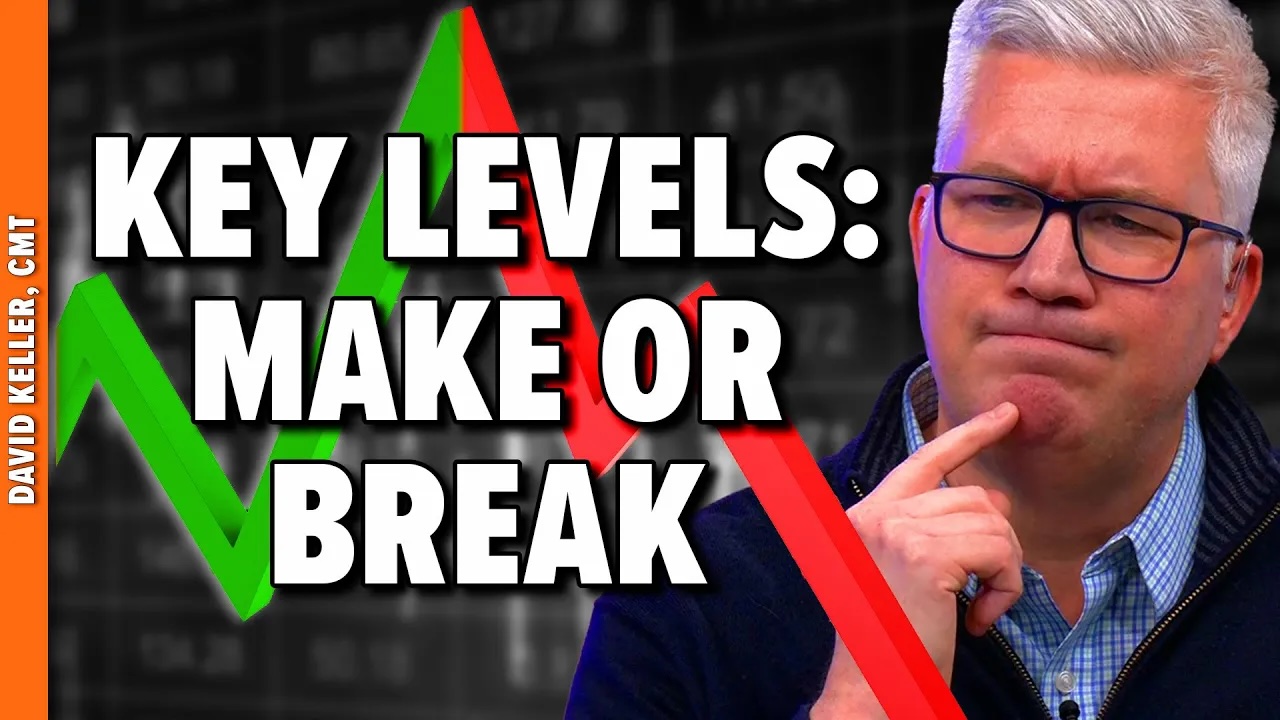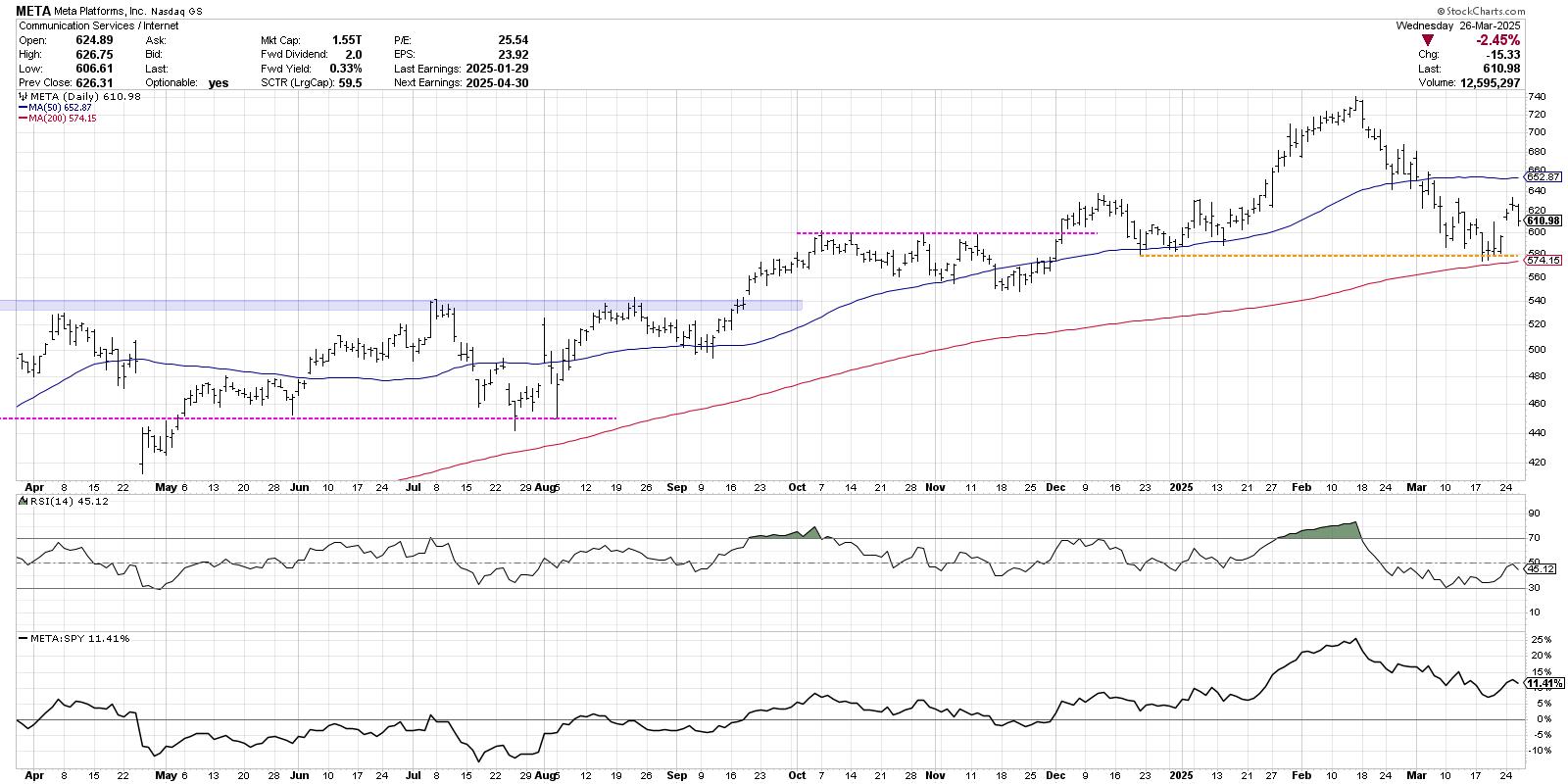 Secular Bulls and Secular Bears is terminology that I don’t ever recall hearing more than 15-20 years ago. Now I see the term bandied about all of the time and often it is different in a number of ways. For full disclosure, my entire education on secular markets comes from Ed Easterling. Ed wrote two wonderful books that I strongly recommend – “Unexpected Returns” and “Probable Outcomes.” Ed also maintains a website that is loaded with great articles and charts (even though they are not SharpCharts) at http://www.crestmontresearch.com. Secular is one of those words that I don’t think is well defined, but the dictionary says it pertains to occurring once in an age. My version is simply that it doesn’t occur very often. Even that depends on your viewpoint, but since we are talking about the stock market and it has been around since the late 1800s, we can think of secular as something that happens every couple of decades or so.
Secular Bulls and Secular Bears is terminology that I don’t ever recall hearing more than 15-20 years ago. Now I see the term bandied about all of the time and often it is different in a number of ways. For full disclosure, my entire education on secular markets comes from Ed Easterling. Ed wrote two wonderful books that I strongly recommend – “Unexpected Returns” and “Probable Outcomes.” Ed also maintains a website that is loaded with great articles and charts (even though they are not SharpCharts) at http://www.crestmontresearch.com. Secular is one of those words that I don’t think is well defined, but the dictionary says it pertains to occurring once in an age. My version is simply that it doesn’t occur very often. Even that depends on your viewpoint, but since we are talking about the stock market and it has been around since the late 1800s, we can think of secular as something that happens every couple of decades or so.
Ed is somewhat unique in how he describes or defines a secular bull or secular bear market. I’ll just quote something he wrote for me that I put in my “Investing with the Trend” book. Easterling points out that these secular periods are not random as they follow each other; he actually calls them cycles. The driver of these cycles is the inflation rate as it moves toward and away from price stability. Trends of rising inflation and deflation drive the market valuation lower and result in low returns. As prices stabilize from either deflation or high inflation, valuations are driven upward and the result is high returns. Keep in mind that this is a process whereby moves away from price stability simultaneously cause PE to decline and low or no returns result. Moves toward price stability simultaneously cause PE to rise and result in high returns. I underlined that because I think it is critically important to understand. And when you pause to think about it, it also just makes sense. This article will only discuss the secular bears; the secular bulls will be dealt with another time.
The data used that most folks who analyze this stuff is the Robert Shiller data; he created a monthly database of cyclically adjusted price earnings, called CAPE or PE10. You can find that data, lots of other monthly data, and a full description here.
Chart A is from Easterling’s website (crestmontresearch.com) showing the monthly S&P back to 1900 along with the CAPE below. It shows that rises in PE coincide with rising secular bull markets and declines in PE coincide with sideways/down secular bear markets. And this is important, he only works with reported earnings, you know, the actual ones; not the foolish guesses of the analysts.
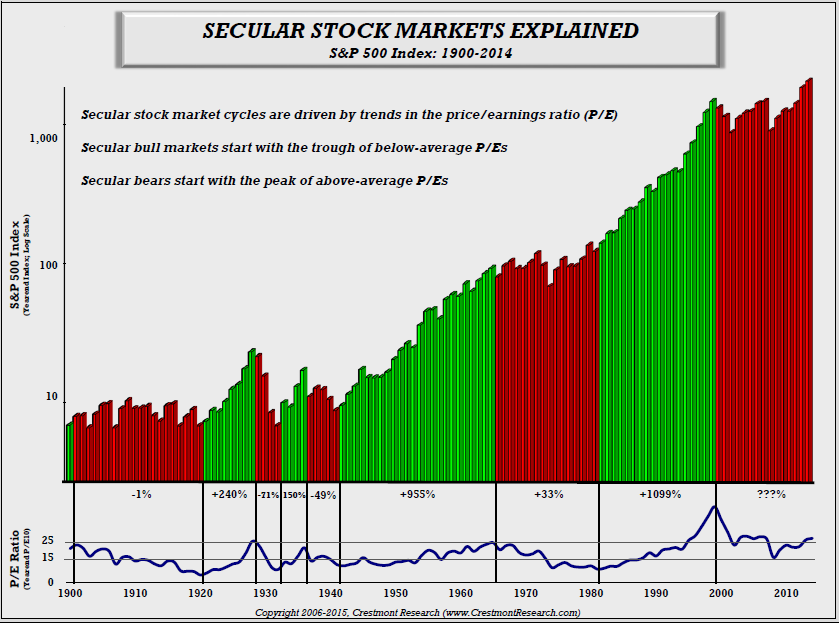
Chart A
Chart B shows all five of the inflation adjusted secular bear markets since 1900. It is clear that there is a wide range of time frames for secular bear markets from only 35 months to 235 months. The red one is the current secular bear that has lasted 178 months as of the end of 2014. So we are currently about in the middle of where the previous ones were based upon duration. This is also the only one that has reached a higher level than when it started. I think this is the issue most are relating to when they claim the secular bear ended in March, 2009. I have to admit it is reasonably convincing.
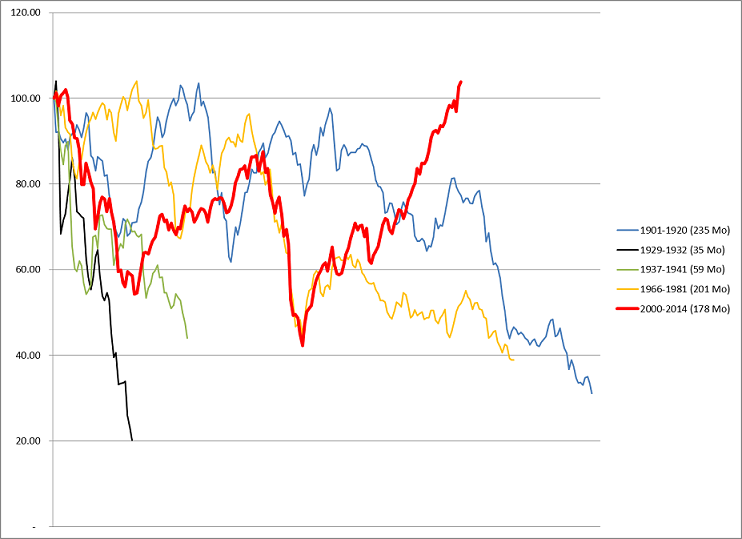
Chart B
Chart C shows all of the secular bear market cyclically adjusted price earnings ratios since 1900. These are the same secular bears as shown in Chart B, but this one is showing the cyclical adjusted price earnings (PE10) and not price. The concern of many is that the current bear began in early 2000 when CAPE (PE10) was at an astronomical level (mid-40s) and has only now come down to the level that previous secular bears began. This is the type of data that brings the “this time is different” crowd out. All of the past secular bears ended when their CAPE reached single digits. We are a long way from that now even though we got close in March, 2009.

Chart C
Chart D is from Doug Short’s website at http://www.advisorperspectives.com/dshort/. Doug was kind enough to create a number of charts for me to use in my Investing with the Trend book, which by the way covers secular markets in excruciating detail. Chart D shows the CAPE which In March, 2009, reached 13.3. So the question most will ask was this the low or the end of the secular bear that began in 2000. Fair question especially based upon the level of the CAPE during previous secular bear ends, even though they were all single digit, this one is close. Sadly we are not playing horseshoes, we are dealing with the uncertainty of the future. If you look back at Chart C, the dip in the current PE gets down to the levels where two of the secular bears still had much further to go. However, all had CAPE that ended considerably lower.
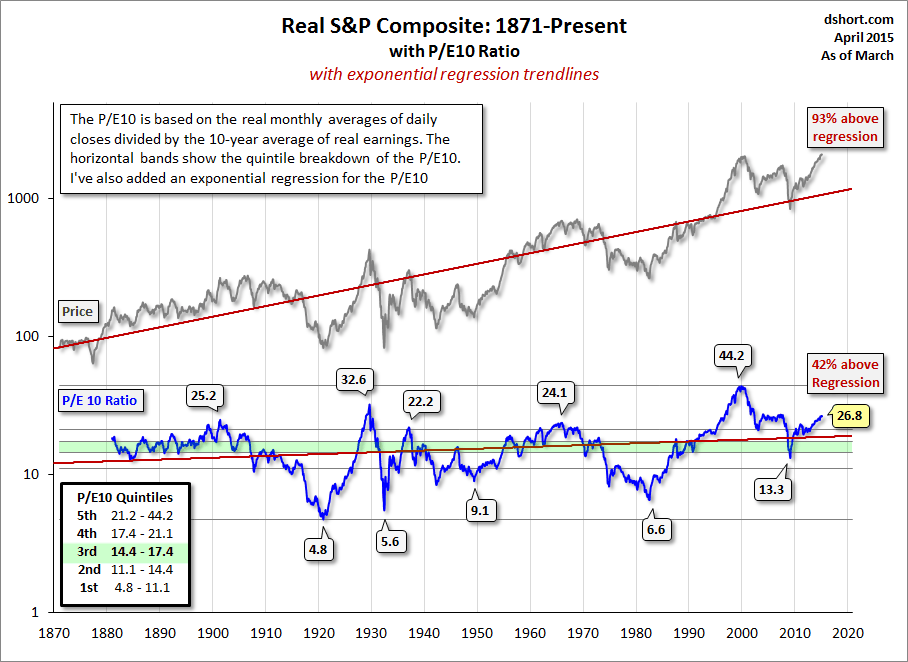 Chart D
Chart D
Chart E shows the current secular bear market that began in March, 2000. The buy and hold crowd has certainly been on a roller coaster and now are probably breathing a little easier thinking everything is just wonderful again. My response to that excessive bullishness is just a reminder that we have had 15 bear markets in the Dow Industrials since its beginning. A simple historical perspective is often needed; not actionable information, but observable information.
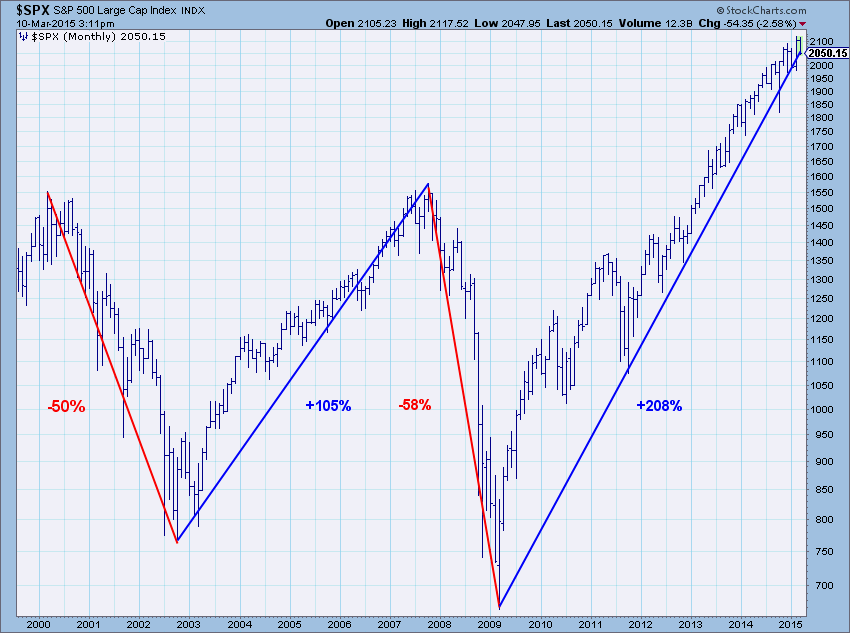 Chart E
Chart E
After a bull run that has lasted over 6 years, it is very easy to lose the long term picture. I hear both sides of the argument about the secular bear being over and a new secular bull began in March, 2009. Those folks just may or may not be correct, but I do know they do not agree with the definition of what a secular bull and bear market are in regard to Easterling’s work. And as Ed Hart, the wonderful credit analyst on FNN in the 1980s used to say – we will all be smarter in the fullness of time.
Trade with knowledge,
Greg Morris




